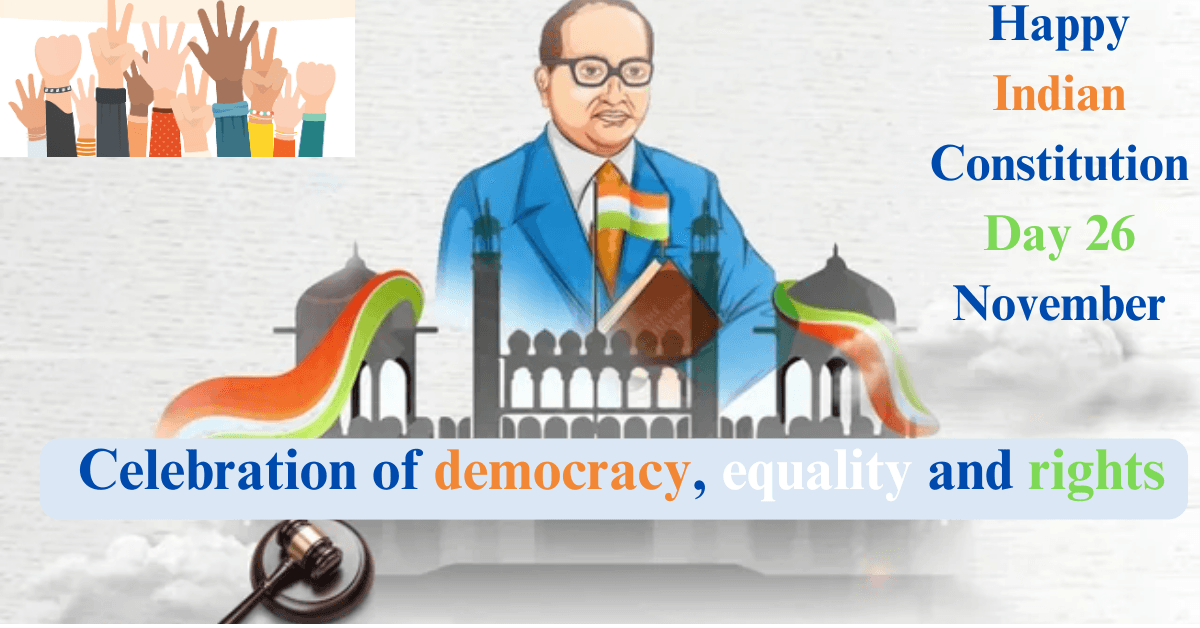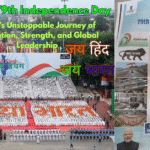
Table of Contents
Republic Day of India 26th January 1950
Republic Day of India 26th January 1950 : Republic Day, celebrated every year on 26th January, is one of the most important national events in India. It marks the day India officially became a republic by adopting its own Constitution on 26th January 1950. This significant occasion represents the country’s transition from being a British Dominion to a fully independent and sovereign republic.
The adoption of the Constitution was a monumental event in India’s history, highlighting the end of colonial rule and the beginning of a new democratic era. The date, 26th January, holds deep significance in India’s independence struggle, as it was on this very day in 1930 that the Indian National Congress declared Purna Swaraj (complete independence).
Republic Day of India (26th January 1950): The Historic Journey of the Indian Constitution

Why 26th January? The Symbolic Importance
The choice of 26th January was not coincidental. This date was symbolic, as in 1930, the Indian National Congress, led by Jawaharlal Nehru, declared its commitment to achieving full independence from British rule. The decision to celebrate Republic Day on this date reflects the historical struggle and sacrifices made by India’s freedom fighters.
The Formation of the Indian Constitution
India’s journey towards drafting its Constitution began after gaining independence from British rule on 15th August 1947. Initially, India remained a British Dominion, with the British monarch as the ceremonial head of state. However, Indian leaders, including Dr. B.R. Ambedkar, envisioned a future where India would govern itself through its own democratic framework.
The Constituent Assembly of India, which met for the first time in 1946, worked tirelessly for three years to draft a new Constitution. Dr. Ambedkar, often called the “Father of the Indian Constitution,” played a crucial role in drafting the Constitution, which was adopted on 26th November 1949 and came into effect on 26th January 1950.

The Indian Constitution: A Framework for a Sovereign Nation
The Constitution of India is the longest written constitution in the world. It consists of a preamble, 25 parts, 12 schedules, and over 450 articles that define the political structure of the country. It provides for the separation of powers between the executive, legislature, and judiciary while guaranteeing fundamental rights and duties for all citizens.
The Constitution also lays out the structure of the Indian government, with provisions for a President, Parliament, and judiciary. Its adaptability has allowed India to grow and evolve as a democracy, accommodating the needs of a diverse and ever-changing nation.
The First Republic Day (26th January 1950): A New Beginning
On 26th January 1950, India officially became a republic. This meant that the country no longer had a British monarch as its head of state; instead, it was now governed by its President, who was elected by the people. Dr. Rajendra Prasad, India’s first President, took the oath of office on this historic day.
The first Republic Day celebrations in New Delhi were grand and set the tone for future celebrations. The Republic Day Parade, which continues to be an annual tradition, showcased India’s military strength, cultural diversity, and progress since independence. Held at Rajpath, the parade features vibrant displays of India’s unity in diversity, with participation from the armed forces, school children, and cultural groups.
The Role of the President on Republic Day
The President of India plays a central role in the Republic Day celebrations. On this day, the President unfurls the national flag and delivers an address to the nation. The ceremony also includes the Republic Day Parade, where the President observes the impressive display of India’s military and cultural achievements.
Furthermore, Republic Day is marked by the awarding of prestigious honors such as the Bharat Ratna, Padma Shri, and Padma Bhushan to distinguished individuals for their exceptional contributions to various fields.
Significance of Republic Day in India’s Democracy
Republic Day is not only a celebration of the Constitution’s adoption but also a reminder of the sacrifices made by freedom fighters and the vision of the Constitution’s framers. It serves as a reaffirmation of India’s commitment to democracy, justice, and equality. The day brings people together, uniting the nation in patriotism and pride.
Schools, colleges, government offices, and institutions across India host flag-hoisting ceremonies and cultural programs. Republic Day is a time for reflection on the nation’s progress and a reaffirmation of its commitment to upholding democratic values.

Republic Day Celebrations: A Spectacle of Unity
The Republic Day celebrations are a major event in India. The highlight is the grand parade held at Rajpath in New Delhi. The parade features vibrant tableaux from different states, showcasing India’s rich culture and diversity. It also includes impressive displays by the Indian Armed Forces, featuring military bands, armored vehicles, and soldiers in ceremonial uniforms.
Additionally, the President’s address to the nation is broadcasted across the country, making Republic Day a truly national event. Schools and communities nationwide also conduct various activities such as flag hoisting, cultural performances, and contests to engage students and the public in the celebrations.
The Importance of Republic Day in Modern India
Republic Day holds immense significance in modern India. It is a day to reflect on India’s progress as a democracy and to celebrate its unity in diversity. It is a reminder of the hard-won independence and the efforts that went into crafting the Constitution that continues to guide the country.
As India continues to evolve, Republic Day remains a beacon of hope and inspiration for future generations. It is a day to honor the values of justice, equality, and liberty that form the foundation of the Indian Republic.
RepublicDayIndia, #26thJanuary1950, #IndianConstitution, #RepublicDayCelebrations, #DrBRAmbedkar, #RajendraPrasad, #IndiaDemocracy, #RepublicDayParade, #IndiaHistory, #ConstitutionOfIndia, #IndianRepublic, #BharatRatna, #IndiaSovereignty, #IndependenceStruggle, #IndiaCulture, #PurnaSwaraj, #NationalHolidayIndia, #IndianFreedomStruggle
Conclusion
Republic Day, celebrated on 26th January, is a cornerstone of India’s democratic journey. It marks the adoption of the Indian Constitution in 1950, which set the stage for a sovereign, democratic India. Republic Day not only honors the past but also reminds every Indian of their responsibility in safeguarding the nation’s democratic ideals.
From the historic first Republic Day celebrations to the vibrant annual parades, this day is an embodiment of India’s spirit of unity, resilience, and democratic values. It serves as a reminder of the sacrifices made by the freedom fighters and the contributions of the architects of the Constitution who created a framework for the India we know today.
As India moves forward, Republic Day continues to inspire citizens to uphold the Constitution’s ideals, ensuring a bright future for the nation.


